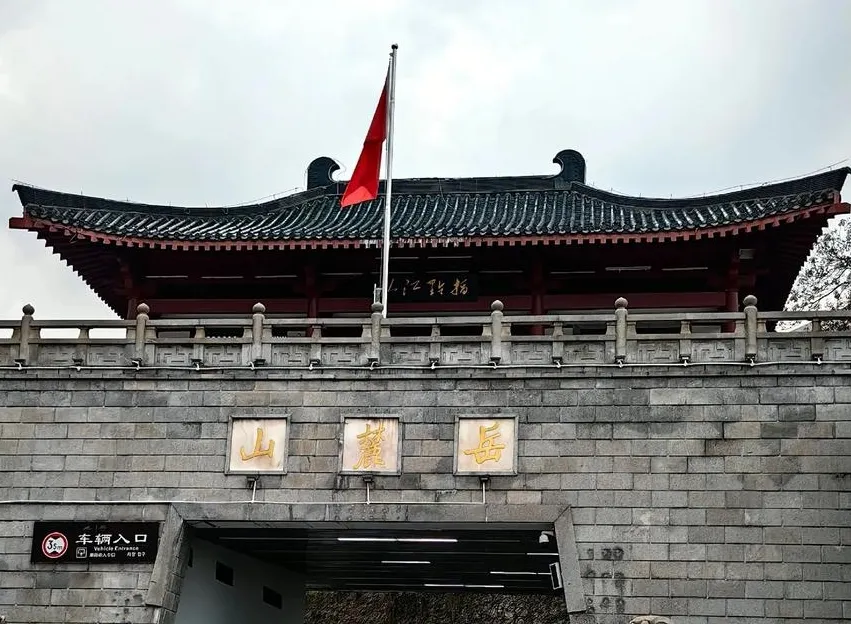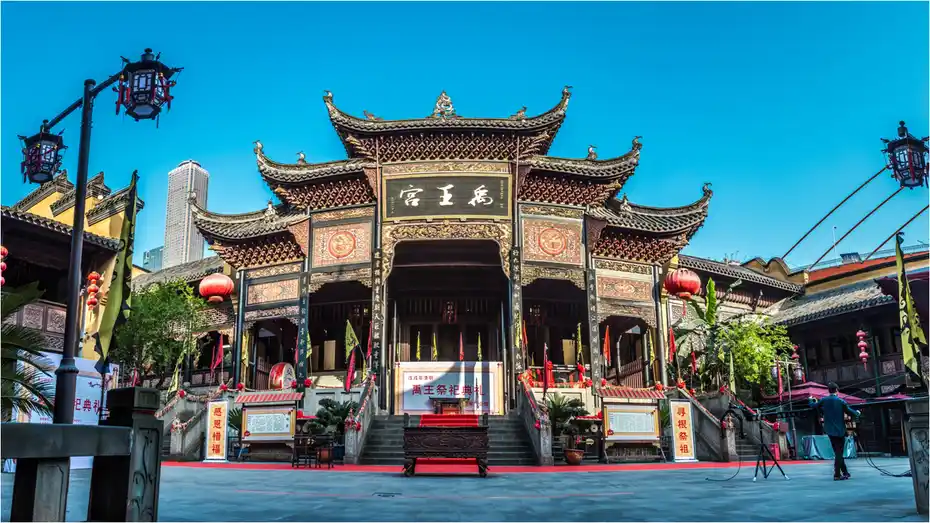Introduction
Visiting China’s scenic mountain regions often leads travelers to unique transport experiences. One of the most memorable is the cable car ride through lush valleys and misty peaks. Among these, Zhonggu Cableway stands out for its breathtaking views and cultural significance.
Located in Sichuan Province, near the famous Siguniang Mountain (Four Sisters Mountain), this cableway offers both convenience and stunning scenery. It’s a key access point for hikers and nature lovers exploring the area.
This article provides a complete guide to reaching Zhonggu Cableway. You’ll learn transportation options, ticket details, operating hours, and insider tips. Whether you’re planning a solo trip or a family adventure, this guide ensures a smooth journey.
We’ve gathered up-to-date information based on recent visitor reports and official sources. Our goal is to help you avoid common pitfalls and make the most of your visit.
From choosing the right time to ride to understanding local regulations, every detail matters. Let’s dive into how to get to Zhonggu Cableway with confidence and ease.
Why Visit Zhonggu Cableway?
Zhonggu Cableway isn’t just a way to reach higher elevations—it’s an experience in itself. The ride lifts passengers over 3,000 meters above sea level, offering panoramic views of snow-capped peaks and alpine forests.
The surrounding area is part of the Siguniangshan National Geopark, a UNESCO-listed site known for its biodiversity and dramatic landscapes. Many visitors use the cableway as a starting point for trekking routes.
For photographers, early morning rides provide golden light across the mountains. Nature enthusiasts appreciate the chance to spot wildlife like pikas and marmots from the cabin windows.
Accessibility is another major benefit. Instead of a strenuous uphill hike, the cableway allows people of all fitness levels to enjoy high-altitude scenery safely.
It also connects directly to popular trails leading toward Changping Pass and Haizi Valley. This makes it ideal for multi-day treks or shorter day hikes.
Whether you’re seeking adventure or tranquility, Zhonggu Cableway delivers unforgettable moments. Its combination of natural beauty and modern infrastructure sets it apart from other mountain transport systems in western China.
How to Reach the Cableway Station
Getting to Zhonggu Cableway requires careful planning due to its remote location. The nearest town is Rilong, about 180 kilometers northwest of Chengdu.
Most travelers begin their journey in Chengdu, the capital of Sichuan. From there, several transport options are available:
- Private Car: Fastest option; takes around 4–5 hours.
- Bus: Scheduled coaches run daily from Chadianzi Bus Station.
- Tour Packages: Include round-trip transport and entry fees.
If taking public transport, arrive at Chadianzi Bus Station by 7:00 AM for the first departure. Buses typically leave when full, so early arrival increases your chances.
Once in Rilong Town, hire a local shuttle or taxi to the cableway entrance. These vehicles wait near the main square and cost about CNY 50–80 per person one way.
Alternatively, some hotels offer free pickup services if booked in advance. Confirm this when making reservations.
Note that road conditions can vary, especially during rainy or snowy seasons. Delays are possible, so build extra time into your schedule.
Operating Hours and Best Time to Ride
Knowing when Zhonggu Cableway operates is crucial for trip planning. The cableway generally runs from **8:00 AM to 5:00 PM**, but hours may change seasonally.
During peak tourist months—April to October—service starts earlier and ends later. Winter schedules (November to March) may reduce operations due to weather.
| Season | Opening Hours | Frequency |
|---|---|---|
| Spring / Summer / Autumn | 8:00 AM – 5:30 PM | Every 10–15 minutes |
| Winter | 9:00 AM – 4:30 PM | Every 20–30 minutes |
To avoid crowds, aim to arrive right at opening. Midday brings the largest number of tour groups.
Morning rides also offer clearer skies and better photo opportunities. Fog tends to roll in by afternoon, especially in summer.
Weather plays a big role in visibility. Check forecasts before departure. Clear days after rainfall often produce the sharpest mountain views.
Keep in mind that the cableway may suspend service during strong winds or heavy snow. Always verify current status upon arrival.
Ticket Prices and Booking Options
Tickets for Zhonggu Cableway are sold separately from park entrance fees. As of 2024, prices are as follows:
- Cableway Round-Trip: CNY 80
- Cableway One-Way: CNY 50
- Siguniangshan Park Entry: CNY 120 (valid for 3 days)
Children under 1.2 meters ride free. Students with valid ID receive discounts on both park and cableway tickets.
You can purchase tickets online via official platforms like WeChat Mini Programs or Ctrip (Trip.com). However, internet connectivity in the area can be unreliable.
On-site ticket counters are located near the base station. Lines form quickly during holidays, so arriving early helps.
Pro tip: Buy your park pass first, then proceed to the cableway queue. Staff will check both documents before boarding.
Some travel agencies include cableway access in guided tours. While slightly more expensive, these packages save time and planning effort.
Avoid unofficial resellers—they may charge inflated prices or sell expired tickets.
What to Expect During the Ride
The Zhonggu Cableway spans approximately 2.5 kilometers, ascending over 600 vertical meters. The entire journey lasts about 15 minutes.
Cabins are enclosed and climate-controlled, holding 6–8 passengers each. They move smoothly along steel cables anchored between towers.
Large windows provide unobstructed views throughout the ascent. On clear days, you can see four major peaks of Siguniang Mountain.
As elevation increases, watch for changes in vegetation. Lower slopes feature dense pine forests, while upper zones show rocky terrain and patches of wildflowers.
Don’t forget your camera—but keep bags secured. Sudden gusts can occur near exposed sections.
There are no rest stops during the ride. Use the restroom before boarding, especially if continuing to hiking trails afterward.
At the top station, follow signs to trailheads or viewing platforms. Most visitors head toward Changping Valley or start the ascent to Changping Pass.
Remember: oxygen levels drop significantly at this altitude. Move slowly if feeling lightheaded.
Pack Smart: Essential Items to Bring
Packing wisely enhances comfort and safety during your visit. Weather changes rapidly in the mountains, even in summer.
Layered clothing is essential. Start with moisture-wicking base layers, add a fleece mid-layer, and finish with a windproof outer jacket.
Sun protection is critical. High UV exposure occurs at altitude. Pack sunglasses, sunscreen (SPF 50+), and a wide-brimmed hat.
Snacks and water help maintain energy. Carry at least one liter of water and quick-energy foods like nuts or granola bars.
Other recommended items:
- Camera or smartphone with full battery
- Portable charger
- Light backpack
- Walking poles (especially for descents)
- Basic first aid kit
Avoid bringing large luggage—the cableway has limited space. Small daypacks are best.
Also, carry cash. While some vendors accept mobile payments, signal strength is weak at higher elevations.
Nearby Attractions and Hiking Trails
Zhonggu Cableway serves as a gateway to some of Sichuan’s most beautiful trails. After disembarking, consider exploring these nearby spots:
Changping Valley: An easy 2-hour loop trail through meadows and streams. Ideal for families and casual walkers.
Haizi Valley: Known for its mirror-like alpine lake reflecting surrounding peaks. Moderate difficulty; takes 3–4 hours round-trip.
Changping Pass: A challenging high-altitude trek reaching over 4,000 meters. Recommended only for experienced hikers with proper gear.
Each route offers distinct views of the Four Sisters peaks: Danba, Si Ma, Ya Mei, and Guanyin.
Trail markers are posted, but GPS apps like Gaode Map or offline maps work better than Google Maps in this region.
Many visitors combine a morning cableway ride with an afternoon hike. Just ensure you return before the last descent.
Local guides are available at the top station for those wanting deeper insights into geology and culture.
Travel Tips for a Smooth Experience
A successful trip to Zhonggu Cableway depends on preparation. Here are practical tips to enhance your visit:
Book accommodations in Rilong Town the night before. This avoids rushed morning departures from Chengdu.
Acclimatize gradually if coming from low elevations. Spend at least one night at moderate altitude to reduce risk of AMS (acute mountain sickness).
Wear sturdy hiking shoes—even short walks involve uneven terrain.
Respect local customs. The area is home to Qiang and Tibetan communities. Ask permission before photographing people.
Leave no trace. Carry all trash back down. Plastic waste harms fragile ecosystems.
Download offline maps and translation tools. English signage is limited.
Finally, confirm operating status the day before. Landslides or maintenance can cause unexpected closures.
Conclusion
Reaching Zhonggu Cableway is more than just logistics—it’s the beginning of a remarkable mountain adventure. With proper planning, you can enjoy seamless access to one of China’s most scenic alpine regions.
From transportation choices to ticket strategies, timing, and packing, each step contributes to a rewarding experience. The cableway itself offers unmatched views and serves as a launchpad for incredible hikes.
By following this guide, you’ll minimize stress and maximize enjoyment. Whether you’re chasing sunrise photos or conquering high passes, Zhonggu Cableway opens the door.
Plan ahead, stay flexible, and embrace the journey. The mountains reward those who prepare well and travel thoughtfully.



